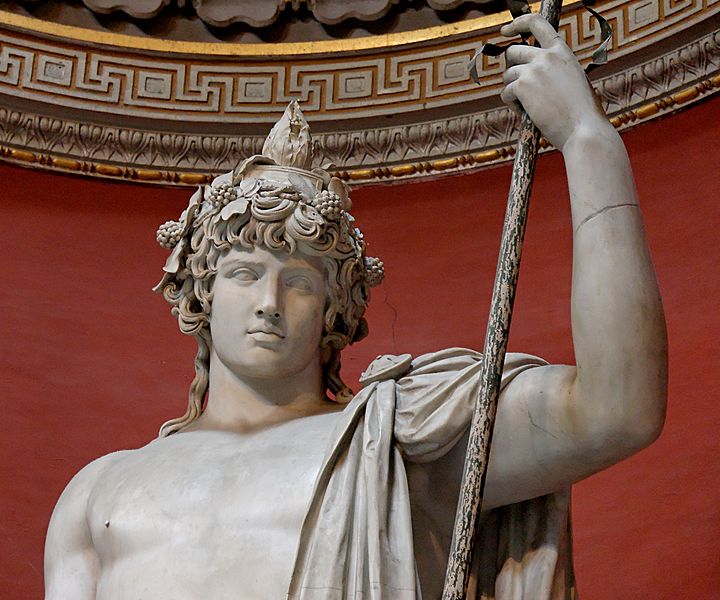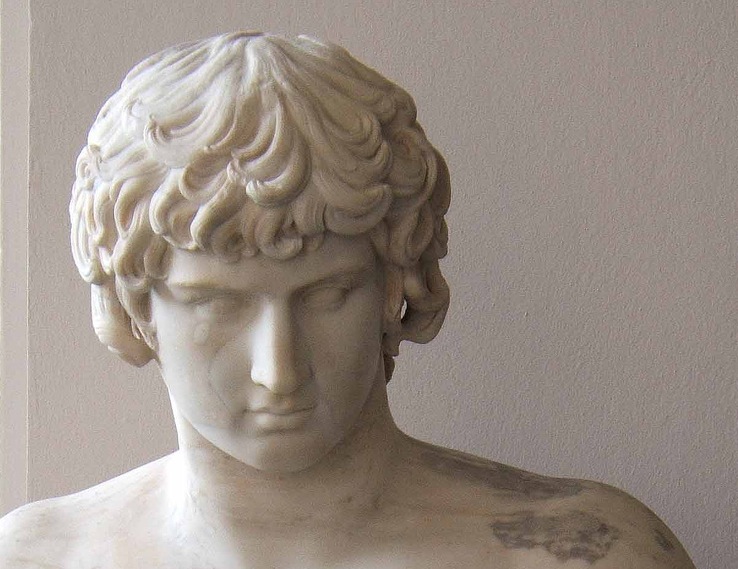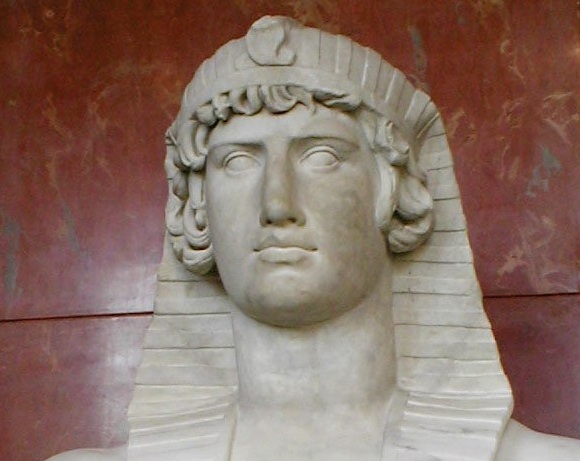Antinous: Finding a Human Among the Gods
One of my favorite travel games to play while visiting the world’s museums is spotting the beautiful, yet mortal, features of Antinous among the faces of the gods.

(source)
The young man with the almond eyes, tousled hair, aquiline nose, and pouting lips was the companion and lover of the Roman Emperor Hadrian. When Antinous drowned in the Nile in 130 AD (whether it was an accident, suicide, or sacrifice is debatable), Hadrian channeled his immense grief in a way only a Roman emperor could: he ordered Antinous’ immediate deification and set up a widespread religious cult. Shrines were built all over the empire. Even a town called Antinoupolis was founded on the Nile!
There are over one hundred known statues of Antinous, and numerous other depictions on medallions, reliefs, and other artifacts. His deep-set eyes stare somberly out from guises of Apollo, Bacchus, Hermes, Ventumnus, and Osiris. When channeling his obsessive desire into marble, Hadrian was guided by his passion for the different cultures of his Empire, as well as classical Greek art.

(source)
There is the huge Antinous Mondragone with elegant empty sockets in the Louvre in Paris, along with Antinous as Aristaeus, the god of gardens, purchased by Richelieu for his collections. In the Vatican is the imposing, yet sensual, Antinous as Dionysus-Osiris with vines in his hair, standing at at colossal height. Several statues of Antinous as a pharoah or Osiris were found at Hadrian’s Villa in Tivoli and a sculpture of him as a priest was discovered in Libya. In Greece, he was found at the Temple of Apollo at Delphi.

(source)
The story of Antinous and Hadrian is the reverse of the Pygmalion tale in which a sculptor falls in love his his creation. Instead, Hadrian used his boundless resources as Emperor to immortalize his dead lover, turning him more and more into an idealized statue: beautiful, yet cold.
Besides their ubiquity, what is most fascinating about the statues is that they give a very identifiable humanity to a Roman emperor, that perhaps eclipses his power and opulence. The feeling (if not the extent of execution) is universal: everyone has lost someone and while we don’t create religious cults, we keep them alive through photographs, words, or keepsakes, treating what they left behind as relics in our personal religion.





Follow us on Twitter to get the latest on the world's hidden wonders.
Like us on Facebook to get the latest on the world's hidden wonders.
Follow us on Twitter Like us on Facebook